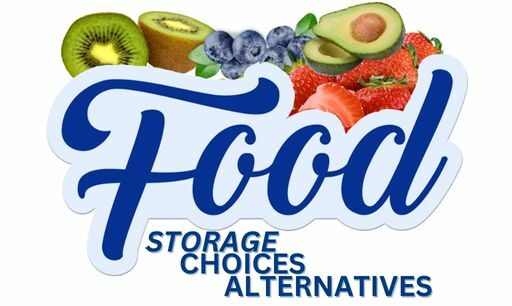These Are the Mushrooms With the Most Protein
You may want to know; which mushrooms have the most protein?
The following are the mushrooms with the most protein per 100 gram serving:
- Oyster mushrooms: 3.3 grams
- White button mushrooms: 3.1 grams
- Morel mushrooms: 3.1 grams
- Enoki mushrooms: 2.6 grams
- Portabello mushrooms: 2.5 grams
- Shiitake mushrooms: 2.2 grams
- Maitake mushrooms: 1.9 grams
- Chanterelle mushrooms: 1.5 grams
Mushrooms are not considered a high protein food source. Most of them contain between 4 to 7 percent of the daily recommended value (DV). If you’re trying to add additional protein to your meal, especially for vegetarian dishes, every little bit adds up1.
This article will list the mushrooms highest in protein, starting with the highest to lowest. The serving size used is 100 grams which are almost equal to 1/2 cup. In addition, I’ll inform you of their total nutrients which may benefit you the most.
Some of these are difficult to locate in local stores, they’re all available on Amazon which you can check out right here, organic mushrooms.
Disclaimer: Some links in this article are affiliate links which means I may earn a small commission at no extra cost to you. As an Amazon associate I earn from qualifying purchases.
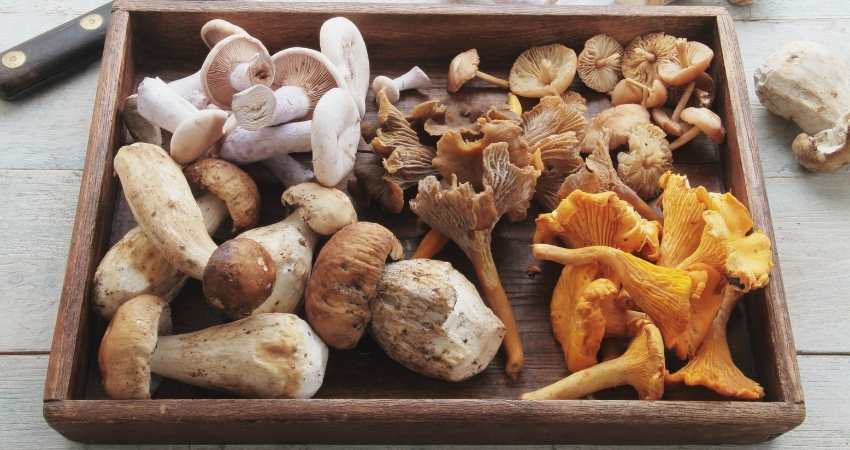
As a Certified Health Coach many clients ask me about healthy food including mushrooms. Also, I purchase and consume them every week. Therefore, I have researched this topic in the past and present. Let’s examine the different types closely.
1. Oyster Mushrooms
They have a fan, or an oyster-shaped cap that are white, grey or tan. Oyster mushrooms are also known as pearl oyster or tree oyster. In many Asian countries the Oyster mushroom is treated as a delicacy, being used in many ways to impress those around you. They’re especially popular in Korea, China or Japan.
They can be roasted, grilled, fried, sautéed or served in a soup. Luckily, it has entered commercial production making it widely available in many parts of the world. They’re more commonly found in Asian supermarkets but may appear at major supermarkets. Adding Oyster mushrooms to a healthy, protein-rich diet should always be welcome.
Oyster mushrooms will provide a large percentage of protein, niacin, riboflavin and pantothenic acid (Vitamin B5)2.
A 100 gram serving provides3 the following nutrients:
- Protein: 7% DV
- Niacin: 25% DV
- Riboflavin: 21% DV
- Pantothenic Acid: 13% DV
- Potassium: 12% DV
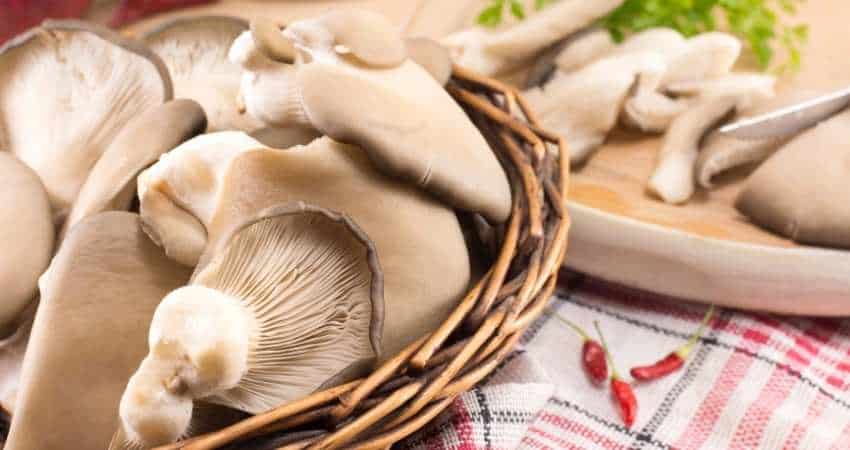
2. White Button Mushroom
With the Latin name of Agaricus Bisporus, White Button mushrooms are the most common mushrooms in the world. They are used in almost every single household recipe you can imagine.
White button has a mild texture and blends well with most other ingredients. They can be cooked any way possible and work well on pizza, burgers or in whole-wheat pasta.
White button are highest in riboflavin but also have a good percentage of selenium4.
A 100 gram serving of white buttons contains5 the following:
- Protein: 6% DV
- Riboflavin: 24% DV
- Niacin: 18% DV
- Pantothenic Acid: 15% DV
- Selenium: 13% DV
- Copper: 16% DV
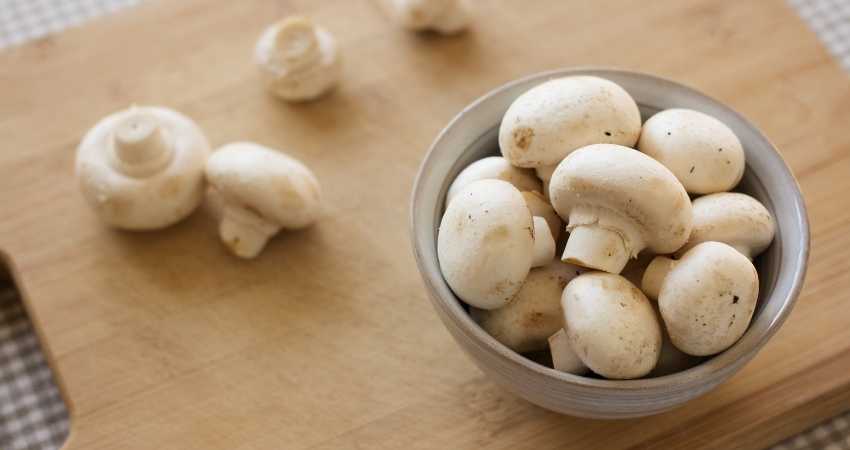
3. Morel Mushrooms
When it comes to mushrooms, texture may or may be unimportant to you. These mushrooms are spongy, even look like dry sponges and have an earthy flavor. Morels are best when grilled or sautéed. They can range in color from cream to very dark and the darker the tastier.
Morel mushrooms tend to be on the expensive side because they are hard to grow, fragile and are foraged.
Morels are hard to find in markets and may be available in specialty stores throughout the year. If you’re fairly new at hunting mushrooms you may want to seek more experienced instruction on foraging them.
Morels are highly nutritious and are full of antioxidants, vitamins and minerals. In addition to protein, they contain a high percentage of iron, Vitamin D, potassium and fiber.
A 100 gram serving of Morel mushrooms provide6 the following nutrients:
- Protein: 6% DV
- Iron: 68% DV
- Vitamin D: 25% DV
- Fiber: 10% DV
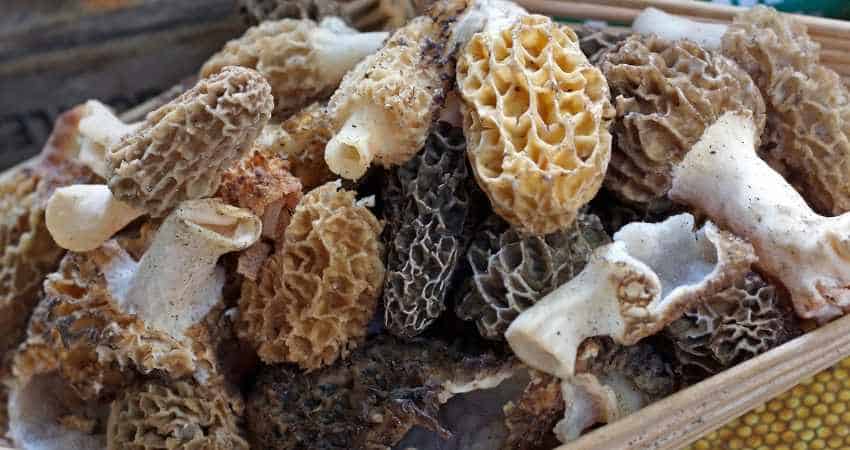
4. Enoki Mushrooms
Extremely low in calories the Enoki mushroom or Flammulina Velutipes, is a much-loved mushroom that hails from the East. They’re native to China, Japan and Korea. They’re consumed by millions around the world thanks to modern cultivation.
Loved for not only its health benefits, Enoki is one of the tastiest and most interesting mushrooms used in the culinary arts. Many food lovers and YouTubers include Enoki mushrooms in their dishes.
They’re adored for the thin stalks and slight heads that they have. They look like noodles with tiny heads. The most common ones are off white but can be golden or light brown.
Enoki mushrooms contain niacin, folate, thiamin and fiber7.
A 100 gram serving of Enoki contains8 the following:
- Protein: 5% DV
- Niacin: 30% DV
- Thiamin: 12% DV
- Folate: 13% DV
- Potassium: 11% DV
- Pantothenic Acid: 11% DV
- Fiber: 11% DV
- Riboflavin: 10%
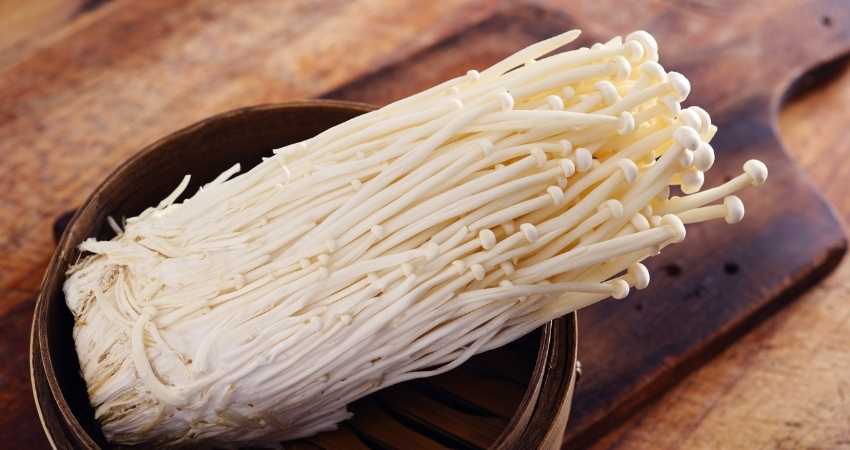
5. Portabello Mushrooms
This is a very common mushroom and can be found in many restaurants as an entree item on the menu. They can be found in most supermarkets and compared to some of the other mushrooms on this list are more cost efficient.
In addition to the 5% protein, Portabello mushrooms contains riboflavin, niacin, B5 and selenium9. Their enormous size makes it a popular alternative to meat without the added calories, sodium and unhealthy fat.
A 100 gram serving of them contains10 the following:
- Protein: 5% DV
- Riboflavin: 28% DV
- Niacin: 23% DV
- Pantothenic Acid: 15% DV
- Potassium: 14% DV
- Selenium: 16% DV
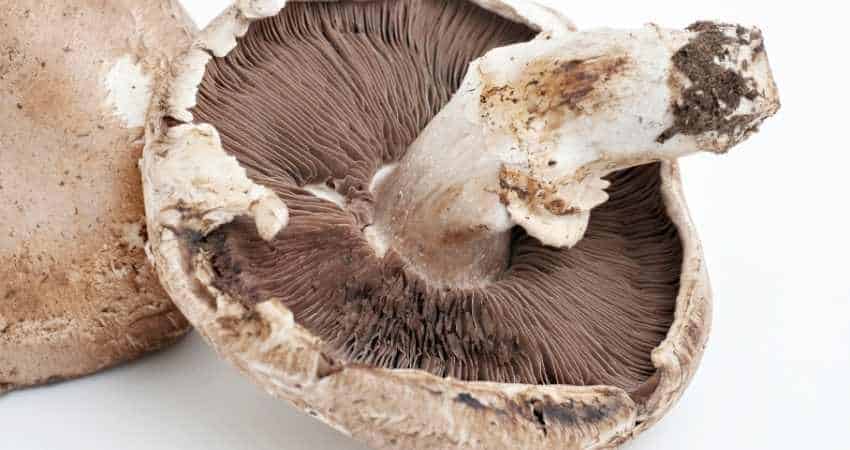
6. Shiitake Mushrooms
Shiitake mushrooms or Lentinula Edodes, are easily one of the most popular mushrooms to come from East Asia, taking center stage in most Vietnamese dishes. They grow on decaying trees made of hardwood.
Most of the Shiitake are grown in Japan, although they are produced in other countries including the United States.
However, there is a twist with Shiitake mushrooms though, a lot more nutrients become present when dried. These will differ for each mushroom depending on where they are grown.
This means where you get your Shiitake mushrooms and the time of the year that they are gathered will greatly affect the overall nutritional value11.
A 100 gram serving contains12 the following:
- Protein: 4% DV
- Potassium: 6% DV
- Fiber: 9% DV
- Selenium: 35% DV
- Pantothenic Acid: 36% DV
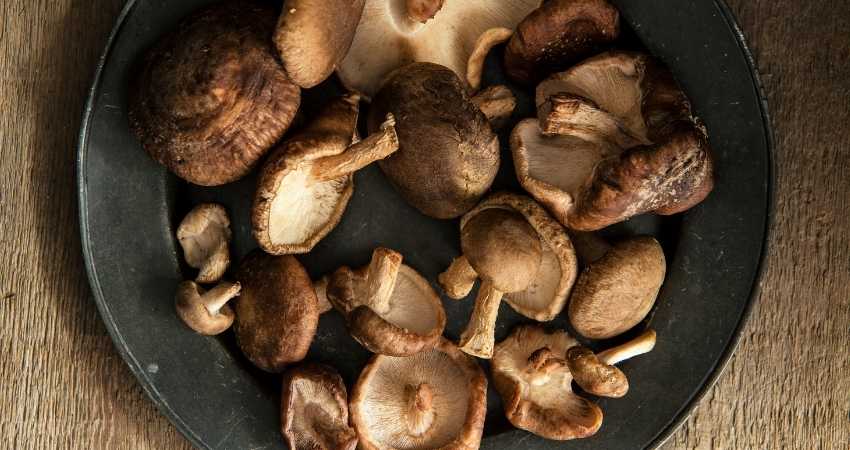
7. Maitake Mushrooms
Seen as the king of mushroom or Grifola Frondosa, is a wildly popular mushroom that requires you to go foraging in the right locations. You can try growing them at home, but they typically don’t grow as good compared to their natural surroundings.
They’re hard to find in the local markets, so I included this link to organic Maitake on Amazon, click here.
Used as a medicinal mushroom it has been popular in countries like Japan for thousands of years and has even earned itself a few nicknames like Hen of the Woods.They can be cooked various different ways but they’re at their best when sautéed.
Scientists are studying this mushroom for possible health benefits13.
A 100 gram serving of Maitake contains the following:
- Protein: 4% DV
- Thiamin: 10% DV
- Riboflavin: 14% DV
- Niacin: 33% DV
- Fiber: 11% DV
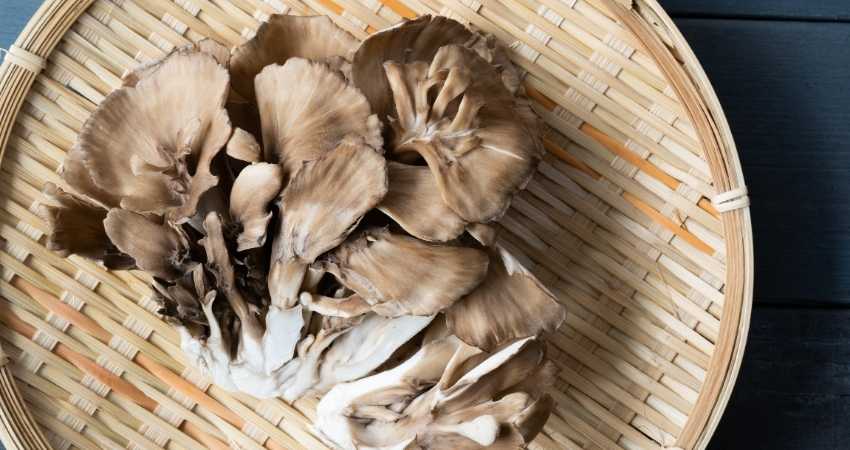
8. Chanterelle Mushrooms
Mostly widespread in Europe, the Chanterelle cups look like trumpets and have wrinkled ridges. Depending on where they’re grown you’ll find orange, white and yellow colors. They can’t grow in open fields and are typically found next to trees and shrubs.
There’s a wide variety of organic Chanterelle listed on Amazon. Take a look by clicking here, Organic Chanterelle. They have a hint of fruit flavor and offer many health benefits besides protein.
In addition to a protein mushroom, it contains fiber, iron, vitamin D and potassium.
One serving of 100 grams contains the following:
- Protein: 3% DV
- Fiber: 14% DV
- Vitamin D: 26% DV
- Iron: 19% DV
- Potassium: 11% DV
By the way, can you freeze all mushrooms? Read here next, The Complete Guide To Freezing Mushrooms.
If you have any questions to ask me about this article don’t hesitate to comment below or email us. You can find an email on our contact page.
Read Next – More Anti-Aging Foods
Worms in Your Farm-Raised Salmon? Facts & Myths Revealed
22 Best Anti-Aging Fruits for Looking & Feeling Younger
How to Choose Good Blueberries: The Complete Guide
- National Center for Biotechnology Information: Mushrooms and Health Summit Proceedings [↩]
- National Institutes of Health: Pantothenic Acid [↩]
- NutritionData: Oyster Mushrooms [↩]
- National Center for Biotechnology Information: Updates on clinical studies of selenium supplementation in radiotherapy [↩]
- NutritionData: White mushrooms [↩]
- Nutritionvalue: Morel mushrooms [↩]
- National Center for Biotechnology Information: Hypolipidemic and Antioxidant Activity of Enoki Mushrooms [↩]
- NutritionData: Enoki Mushrooms [↩]
- National Center for Biotechnology Information: Analysis and Evaluation of the Characteristic Taste Components in Portobello Mushroom [↩]
- NutritionData: Portabella mushrooms [↩]
- ScienceDirect: Edible mushrooms: Role in the prevention of cardiovascular diseases [↩]
- Nutritionvalue: Shiitake mushrooms [↩]
- Memorial Sloan Kettering Cancer Center: Maitake [↩]
